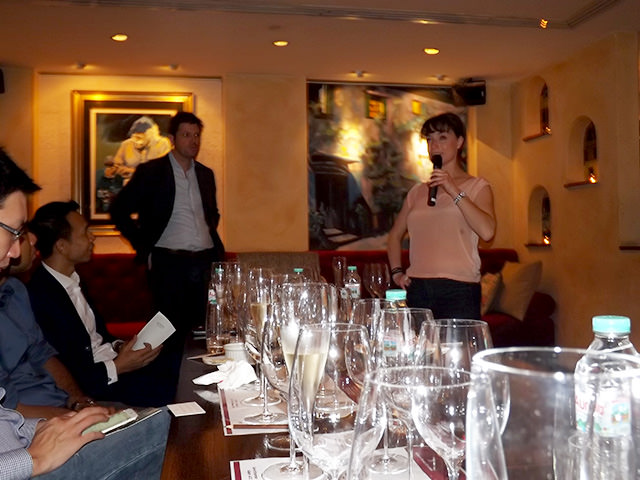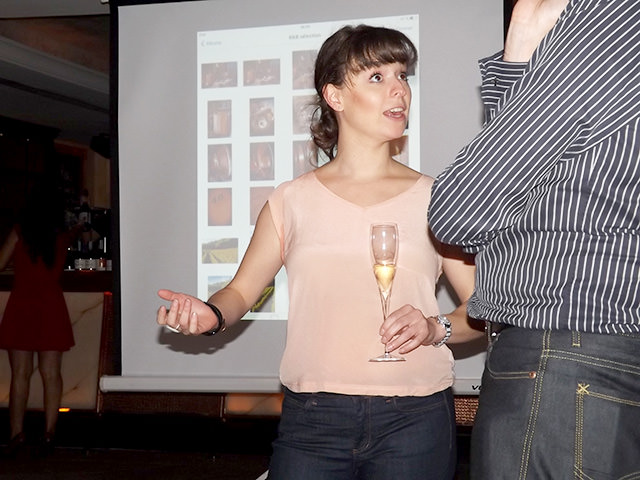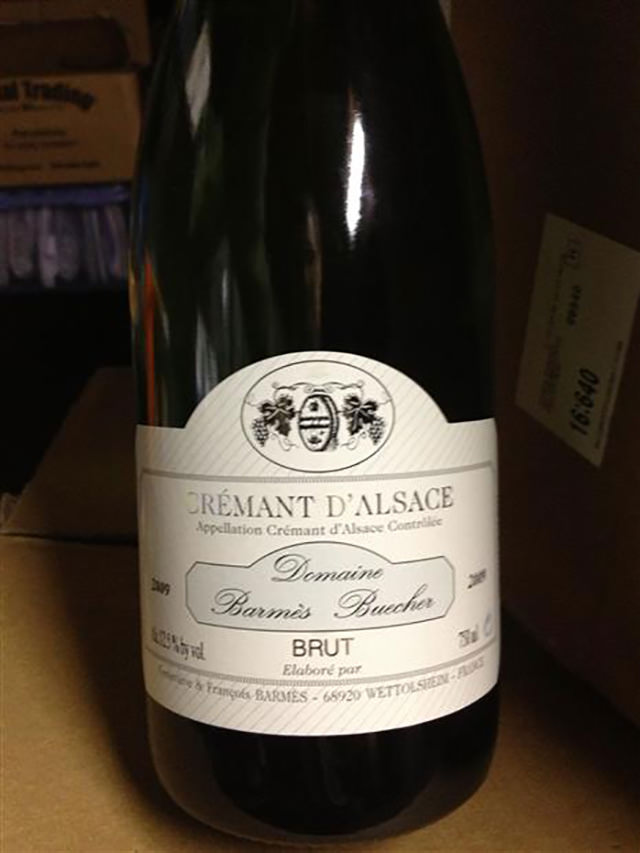Fresh off a plane from Hong Kong, Ms. Sophie Barmès arrived on Friday, November 20, to teach a masterclass in biodynamic viticulture (grape growing) and present a tasting of wines from her 16 hectare (40 acre) Alsatian estate, Domain Barmès-Buecher, represented in Thailand by Marco Polo Wines.
The biodynamic approach is based on principles defined by Rudolph Steiner in 1924. Updating these principles to the 21st century the biodynamic approach serves as a counterpoint to modern vineyard practice as it emphasizes the avoidance of vineyard chemicals and in their place utilizes the strengthening of the soil through natural means using compost as well as some other practices such as coordinating plant growth cycles to the position of the moon, sun and planets.
Biodynamics in the vineyard is a stepchild of the organic movement in grape growing. Organic grape growing has many adherents especially in Australia and the United States where regulations are in place that wineries must adhere to before the term “organic” goes on the main label. Wines from the European Union lack such regulations, although back labels will describe the wine as organic.( I noticed this past weekend that the Australian winery, Angove, now has organic labeled wines on the shelf here in Thailand.)
Barmès noted that a favorable climate is essential in producing biodynamic wines and that grapevines have been grown on her property since the 17th century but the vineyards were converted to the biodynamic method only in 1995. The motivation behind the change was to produce, in Barmes words, wines that were more “deep” in character.
The vineyards are located in five different villages but more importantly, the vineyards lie in a very dry area, especially near Colmar, France’s driest region, where the Vosges Mountains protect the vineyards from approaching rain clouds. A vineyard that receives a lot of rainfall may produce high vegetation (leaves) but with that comes diseases of all types.
Five wines were tasted four of them from the 2012 vintage. Leading off was a fragrant Crémant d’Alsace Brut Nature sparkling wine that was produced from four grape varieties: Pinot Blanc, Pinot Auxerrois, Chardonnay and Pinot Gris. Surprisingly, one-third of the domain’s output goes to this sparkling wine.
Next came a singular wine from the 2009 vintage, Riesling Alsace Grand Cru Hengst 2009 and with its “grand cru” status, represented a true Alsace-style of Riesling, a little drier than the same wine produced in other areas. Barmès said that “grand cru” wines represent less than five percent Alsace’s total wine production. A Riesling from the Rosenberg vineyard followed.
A Sylvaner Rosenberg Vielles Vignes was a surprise of the evening. For several reasons, the foremost two being few people know about Sylvaner and therefore, few customers buy it. However, if the grape is grown on old vines, in this case 80-year old vines, it can be quite remarkable as this wine proved. The domain produces only 1,800 bottles (150-12 bottle cases).
The last wine was a Gewürztraminer, spicy and charming as only a “Gewurz” can be.
With the large number of sommeliers attending the tasting, my hunch is that most if the domain’s wines will end up at the restaurant level.
[Article by David Swartzentruber]



 0
0